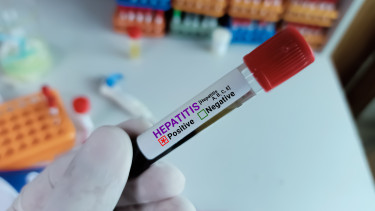COVID-19: 214 deaths, nearly 18,000 new cases in Hungary over the weekend


SNAPSHOT --- 5-7 November 2021 vs. 5-7 November 2020:
- new cases--- 17,834 vs. 14,700 (+21%)
- active cases--- 68,586 vs. 82,108 (-16.5%)
- in hospital--- 3,980 vs. 5,803 (-31.4%)
- on ventilator--- 437 vs. 417 (+4.1%)
- 3-day average percent positive--- 18.47% vs.19.86%
- 7-day average percent positive--- 20.13% vs. 24.25%
- 21-day average percent positive--- 16.15% vs. 16.73%
- 7-day average of 3-day / 21-day average positivity rate--- 137.1% vs. 130.05%
- accumulated cases (1 Aug – 7 Nov) --- 100,391 vs. 105,090 (-4.5%)
- accumulated deaths (1 Aug – 7 Nov) --- 1,371 vs. 1,840 (-25.5%)
The reproduction rate of the virus, which shows how many people a single infected person infects, has been the highest in the world for a couple of weeks now (rising to over 1.7 from 1.2), but it has dropped some by Friday. Although we have seen reproduction rates this high earlier, those were for short periods and at much lower case numbers. This time, however, the fast growth began from a high base.
The government has only recenlty come to its senses and decided to tighten restrictions to some extent. As of 1 November (three days after the announcement!), mask-wearing is compulsory in public transport, visiting in health care institutions is banned, and companies are now allowed to require their employees to be vaccinated against coronavirus. State institutions are no exception.
A one-week vaccination campaign that does not require prior registration was also announced on 4 November, but it will start only on 22 November, while experts have been urging anti-pandemic measures for a while now.
Prime Minister Viktor Orbán said last on Friday the government will need to respond if the spread of coronavirus accelerates further, but he did not specify either milestones or possible counter measures.

The number of Covid patients admitted to hospitals and needing mechanical ventilation has been on the rise for a while now, and their are already at early-May levels.

On charts below the 0% line is important. When the curves are under 0% there’s a decline, when they go over 0% it’s an increase. The changes show that the situation in terms of hospitalisations started to worsen after 20 August.
More importantly, when a value is north of 0% but the curve descends, it means an increase at a slowing rate, rather than a decrease. If the curve is above 0% and ascending, it is an increase at an accelerating rate. When we are under 0% and the curve goes lower, it translates into an accelerating decrease, and when it goes up it marks a decelerating decrease.

As you can see on the graphs below (showing the same data for a longer (left) and a shorter period (right)), ventilated COVID-19 patients / COVID-19 patients in hospital ratio has started to climb again.

A couple of graphs about the positivity rate. Not reassuring, either of them, weather they show a longer term or more recent developments.


When the Case Fatality Rate (CFR, shown on a reversed scale below) drops. the pandemic starts to gather momentum, because CFR = deaths / registered cases. There is an increasing number of new confirmed COVID-19 cases but the number of Covid fatalities is just starting to catch up. Whatever looks like a drop on the chart, is actually an increase in reality. On this chart the CFR is shown in parallel with the number of new daily confirmed cases, as well as their 3-day and 7-day averages.
CFR is the number of Covid fatalities divided by the number of confirmed cases. If you perform very few tests as Hungary does, you'll have massive underdetection. The number of deaths rise but the number of confirmed cases remains relatively low, hence the high CFR.

As regards the left-hand chart below, the number of new COVID-19 cases accumulated since 28 August is only 5.8% lower than in the same period of 2020, while it was 28% lower only two weeks ago and nearly 50% lower six weeks ago. In the meantime, the accumulated time Covid patients spend in hospital is 34% shorter than a year ago, while it was about 18% lower four weeks ago and nearly 10% higher eight weeks ago. (The turnaround came about on 22 September, about a month after the no-restrictions four-day celebrations of the foundation of the state on 20 August.)
On the right-hand chart see that two months ago the number of accumulated days spent in ICUs (practically on ventilator) was more than double of the base period's print, while the difference has narrowed to 1.9% by now (although it marks an uptick from 1.7% on Friday) despite the lower number of cases (accumulated) and fewer days (accumulated) coronavirus patients spend in hospital. This means that there should be a lot more cases to match the severity of this wave as demonstrated by the number of days spent on ventilator.

In terms of the accumulated number of Covid-related fatalities we are not where we were a year ago (accumulation is 26.5% lower vs. 78% higher 8 weeks ago), but same time last year there were no vaccines and cross-immunity (if it works at all) was assumably not as strong as currently. The right-hand chart also depicts that those that admitted to hospital with coronavirus infection are generally in worse condition than Covid patients a year ago.

The number of Covid patients hospitalised is about 30% of the corresponding figure on the same day in 2020, while the number of those in ICUs practically match the base period’s data.


If these graphs weren't enough, here are a few more to compare the current 'wave' with the one a year ago. Here are the main observations (by Balázs Pártos):
- there was a cc. 1.5-month 'delay' this year compared to the same period of 2020 in the positivity rate, but it's gone by now;
- there was a 5-week delay in the number of new cases, but by now we have more cases than a year ago;
- there was 2 to 3-week delay in the number of Covid-related hospitalisations, and although fewer people are in hospital, more of them succumb to the disease than a year ago;
- there was a two-week delay in the number of ventilated coronavirus patients after the crossing of the curves, but the numbers have aligned by now
- there was a 2 to 3-week delay in the number of Covid fatalities (just like in the case of hospitalisations, which is not suprising), and we're already at last year's level.
The problem is that we have as many deaths as the same time last year, even though we are two or three weeks 'behind', which strongly suggests that fatalities will take off in the next two or three weeks.



There is no progress in the vaccination campaign. People that have been fully vaccinated in the basic protocol seek third doses, but even that growth rate needs to be higher, while those that have refused to get their shots are not changing their minds en masse despite the worsening epidemiological situation. And there's also the issue of the waning effectiveness of vaccines to consider...



Cover photo: Getty Images










